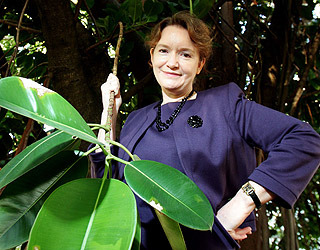Text
WATCH LIVE: Exploring the Deep Waters of National Marine Sanctuary of American Samoa
What lies in the deep waters of National Marine Sanctuary of American Samoa? Over the next several months, you’ll be able to watch dives in these little-explored waters in real time to find out.
From February 16 through March 2, and from April 4 through 21, the NOAA ship Okeanos Explorer will be exploring in and around National Marine Sanctuary of American Samoa and Rose Atoll Marine National Monument. In February, using the remotely operated vehicle (ROV) Deep Discoverer, scientists will be able to get up close with some of the deep-sea environments that make this sanctuary so unique. And in April, 24-hour mapping operations will help scientists better understand the geography of the region.
But it’s not just scientists who will be able to experience these amazing environments! Okeanos Explorer is equipped with real-time broadband satellite communications that provide the ship with telepresence – meaning the videos and photos collected with ROVs can be shared on the internet in real time. That means scientists on shore, teachers, students, and you can watch the dives as they happen!
Tune in here or on the Okeanos webpage from February 16 through 28 to watch the dives:
youtube
youtube
youtube
ROV dives are planned, weather permitting, typically from about 8 a.m. to 5 p.m. SST (2 pm to 11 pm EST).
Known as “America’s Ship for Ocean Exploration,” Okeanos is the only federally-funded U.S. ship specifically assigned to systematically explore our largely unknown ocean for the purpose of discovery and advancement of knowledge. The Okeanos crew – and all the scientists joining via video feed in exploration command centers around the country – is in American Samoa with the specific mission of finding out what’s out there.

The ROVs Seirios and Deep Discoverer are prepared for deployment on the aft deck of the NOAA Ship Okeanos Explorer. Photo: NOAA
National Marine Sanctuary of American Samoa protects more than 13,000 square miles of nearshore coral reefs, deep water reefs, hydrothermal vent communities, and rare marine archaeological resources. Porites coral heads in the sanctuary’s Ta’u unit are among the oldest and largest in the world: the sanctuary’s largest coral head, known as Big Momma, has a circumference of 134.5 feet, stands 21 feet tall, and is more than 500 years old. The sanctuary also encompasses fishing grounds that Samoans have depended on for generations for their livelihoods.
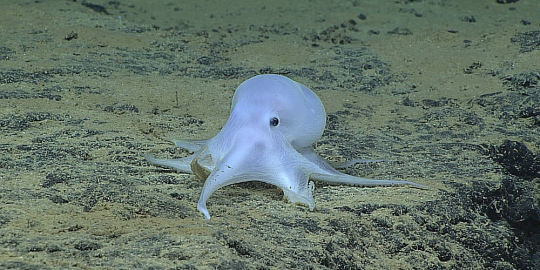
This ghostlike octopod was encountered by the Okeanos researchers on a 2016 expedition to Papahānaumokuākea Marine National Monument in the Northwestern Hawaiian Islands . The octopod is almost certainly an undescribed species and may not belong to any described genus. Photo courtesy of NOAA Office of Ocean Exploration and Research, Hohonu Moana 2016
The sanctuary’s Muliāva unit overlays the marine waters of Rose Atoll Marine National Monument. The easternmost Samoan island, Rose Atoll remains one of the most pristine atolls in the world. The marine environment around the atoll supports a dynamic reef ecosystem that is home to a diverse assemblage of marine species, several of which are threatened or endangered.
The area around Rose Atoll in the sanctuary’s Muliāva unit contains coral reefs, deep-water pelagic habitat, and the Vailulu’u Seamount. Within the Vailulu’u crater is a 330-meter volcanic cone, known as Nafanua, that has been growing in recent years and is likely to breach the sea surface within decades. On the seamount cone are several types of hydrothermal vents that are biological hotspots for invertebrate communities, providing habitat for an unusual group of organisms, ranging from microbial mats to polychaete worms.
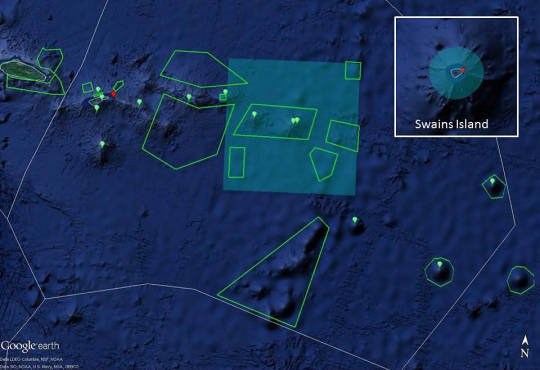
This map shows the general expedition operating area. The green dots are the planned ROV dive sites for the February 16 to March 2 cruise and the red dots are ROV dive sites that are planned for other cruise legs. The green polygons are the priority mapping areas for the expedition. The white line shows the boundaries of the U.S. Exclusive Economic Zone of American Samoa, and the light blue boxes are the boundaries of the Rose Atoll Marine National Monument and National Marine Sanctuary of American Samoa. The Swains Island inset box is another unit of the National Marine Sanctuary of American Samoa located further north than the map area. Image: NOAA
Little is known about the deep ocean habitats of American Samoa, so the scientists are in for some incredible views and new discoveries. Data from this expedition will help improve our understanding of the geologic history and deep-sea habitats of American Samoa, the connection between deep-water and shallow-water ecosystems, and the connections among communities at different seamounts. By studying these regions, too, we can better inform the management plans for marine protected areas like National Marine Sanctuary of American Samoa and Rose Atoll Marine National Monument.
The research team is sure to come across some spectacular sights, so don’t miss out! You can watch live video feeds from the expedition at the top of this post and on the Okeanos Explorer website. Plus, visit the expedition webpage for a mission plan, background essays, and an Ocean Explorer Expedition Education Module that includes an expedition purpose, standards-based lessons, interactive multimedia activities for students, career connections, and much more!
568 notes
·
View notes
Photo

Scientists have figured out how to turn fish scales into tiny electrical generators. Fish scales are made of collagen, which is a “piezoelectric” material. The generators are sensitive enough that, one day, the beating of your heart could power one of them.
To understand how these fishy generators work and learn about piezoelectricity, check out this week’s Gross Science video…and subscribe!
youtube
115 notes
·
View notes
Photo

The next era in discovering drugs in nature’s own medicine cabinet #bioprospecting
View Post
1 note
·
View note
Photo



‘HIV/AIDS
The US National Sea Grant Program recently discovered a group of antiviral drugs extracted from sponges and soft coral that has the potential to cure different types of viruses including HIV/AIDS. AZT is the name of the AIDS treatment which is composed of arabinosides that come from the sea sponge Tethya crypta. The fatty acid surrounding the sea sponge is made up of compounds that allows it to fight foreign infections. The HIV virus attacks white blood cells and weakens the immune system of humans, and so by using this fatty acid, the HIV virus could be potentially be stopped (Demunshi)’
http://coraldigest.org/index.php?title=Pharmaceuticals#cite_note-3
Demunshi, Ypsita, and Archana Chugh. “Role of traditional knowledge in marine bioprospecting.” Biodiversity Conservancy 19 (2010): 3015-3033. Print
1 note
·
View note
Quote
For the scientists working on this project, one way to navigate the political issues of dominion and rights was to separate plants from a people’s knowledge about their use, so as to avoid being accused of stealing privileged knowledge. The effect was to make “local knowledge” almost generic, as in: If indigenous people use it for something, then it must be good for something. Knowing that a plant is good for something is sufficient information for extraction and commercialization. This is strategic decontextualization and instrumentalization of what we might call indigenous knowledge. […] For the desert project I studied, some of the participating Latin American scientists strategically attempted to avoid accusations of theft by opting not to go directly into indigenous communities to collect local plants and knowledge. Instead, they collected plants and information about their uses from sites and sources they considered within the public domain: public markets and the sides of highways. We have to remember that the public domain, as a category, is historical and contested; it’s made, not given.
“The Same But Similar” from Triple Canopy
(via principleofplenitude)
1 note
·
View note
Photo
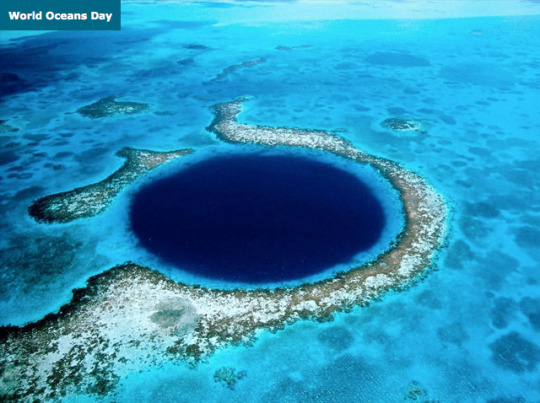
08 June 2013
Sea of Knowledge
There’s something in the water. A cornucopia of life flourishes within our planet’s oceans, and this hidden world might hold the cure to some of today’s most devastating diseases. Take the recently developed cancer drug, trabectedin: it comes from the humble sea squirt and was discovered during a burst of marine bioprospecting – searching the seas for natural products that might cure human ills. This underwater scavenger hunt has yielded 10,000 products in the last two decades and provided countless avenues for new drug development research. Taq polymerase – a heat-resistant DNA-forming enzyme that is today a crucial lab tool used in DNA analysis techniques – was first found in bacteria crowding around deep-water vents. A tropical sea snail gave the world the popular painkiller ziconotide. The list is ever-growing, and with unknown depths still to be plundered, we might be on the crest of a tidal wave of discoveries.
Written by Anthony Lewis
–
Originally published under a Creative Commons Attribution license (CC-BY-NC-SA 2.0); MFS
Research published in PLoS ONE 7(1): e30580
59 notes
·
View notes
Audio
Collusion / episode 1 : Seeds
Collusion is a monthly podcast exploring the relationship between technology and power, by Luiza Prado and Zara Rahman.
In this first full episode of Collusion, we explore how control of seeds affected societies past, present and future. We start by looking at the cinchona tree, and how the cure for malaria - first discovered by the Quechua people- played a key role in facilitating the role of colonialists around the world. Then, we discuss biopiracy and bioprospecting, and community responses, and finally, the role of big seed companies in “seed laws” and privatisation of seeds in poorer countries.
Papers and links we found while researching this episode can be found on our Tumblr, collusionpodcast.tumblr.com.
You can subscribe here for future episodes:
on iTunes: itunes.apple.com/podcast/collusio…id992610040?l=en
And for non-iTunes users, here’s the RSS feed: feeds.soundcloud.com/users/soundclo…510/sounds.rss
Cover image credit: flic.kr/p/5u7KNn
soundcloud.com/collusion
4 notes
·
View notes
Photo
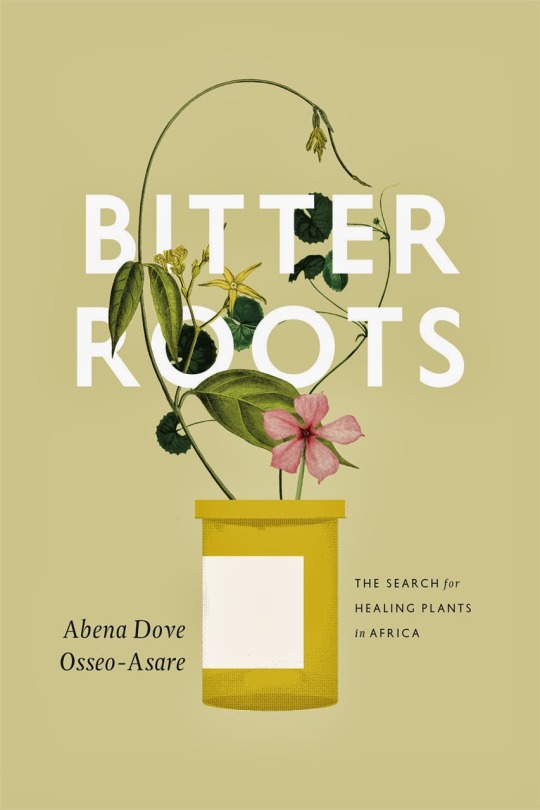
For over a century, plant specialists worldwide have sought to transform healing plants in African countries into pharmaceuticals. And for equally as long, conflicts over these medicinal plants have endured, from stolen recipes and toxic tonics to unfulfilled promises of laboratory equipment and usurped personal patents.
In Bitter Roots, Abena Dove Osseo-Asare draws on publicly available records and extensive interviews with scientists and healers in Ghana, Madagascar, and South Africa to interpret how African scientists and healers, rural communities, and drug companies—including Pfizer, Bristol-Myers Squibb, and Unilever—have sought since the 1880s to develop drugs from Africa’s medicinal plants.
(via Bitter Roots: The Search for Healing Plants in Africa)
60 notes
·
View notes
Photo
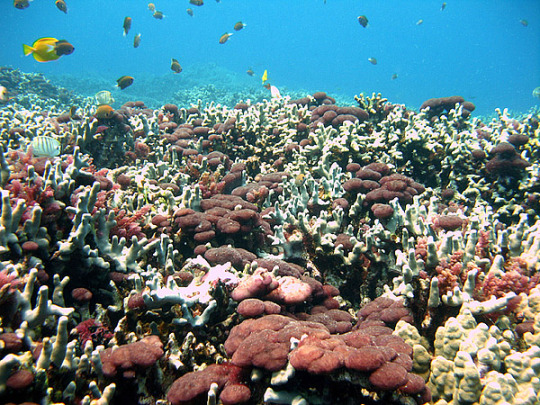
A coral reef infested with cyanobacteria (dark). Photo courtesy of Jennifer Smith.
Seaweed may be a drug out of place
In the pristine waters of Pu’uhonua o H’onauau National Historical Park off the Kona coast of Hawaii, a kind of seaweed consisting of blue-green cyanobacteria is considered a pest and bane to indigenous corals, which are smothered and killed by the rubbery, bulbous bacterial colonies.
But almost nothing nasty in nature is without its upside, a fact underscored again in findings by researchers at UC San Diego’s Scripps Institution of Oceanography and the Skaggs School of Pharmacy and Pharmaceutical Sciences, who found that the cyanobacterium – Leptolyngbya crossbyana – produces chemical compounds that may provide the basis for new anti-inflammatory medicines and anti-bacterial treatments.
Writing in the journal Chemistry & Biology, Hyukjae Choi, a postdoctoral researcher in the laboratory of William Gerwick and colleagues report that L. crossbyana secretes natural products known as honaucins, chemical compounds that control how and where the tiny algae grows and spreads.
If researchers can translate that natural talent into therapeutic drugs or treatments, they might be able to prevent at least some types of bacterial infections in humans or treat inflammation-related conditions like acne and arthritis.
“I think this finding is a nice illustration of how we need to look more deeply in our environment because even nuisance pests, as it turns out, are not just pests,” said Gerwick. “It’s a long road to go from this early-stage discovery to application in the clinic but it’s the only road if we want new and more efficacious medicines.”
You can read the entire UC San Diego news release here.
#drug discovery#cyanobacteria#marine biology#bioprospecting#marine bioprospecting#marine biotechnology
50 notes
·
View notes
Photo
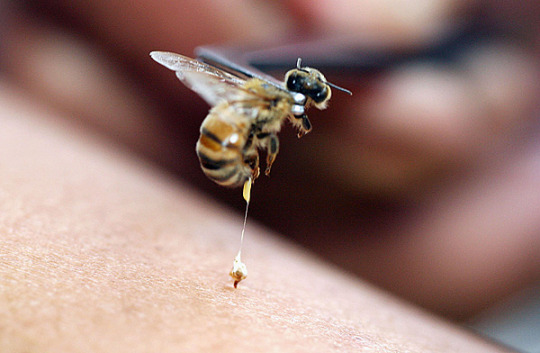
A bee delivers both sting and a dose of melittin, the active component in its venom.
Poking holes for good and bad
The active ingredient in bee venom is melittin, a peptide that does its damage by increasing the permeability of cell membranes to ions. In other words, it pokes holes in cells, allowing their contents to leak out.
In small doses, the pore-inducing effects of melittin are temporary. The holes close up. But recent research out of Rice University suggests that at higher concentrations, the pores stabilize and stay open. And at even greater exposures, melittin can cause cell membranes to dissolve altogether.
So add melittin to the list of candidates for a new class of drugs intended to attack and kill bacteria, cancer cells and other targets by lethal puncture. Such drugs don’t exist yet, but their attractiveness is undeniable.
“This strategy of opening holes in the cell membrane is employed by a great number of host-defense antimicrobial peptides, many of which have been discovered over the past 30 years,” says Huey Huang, lead investigator of the Rice study.
“People are interested in using these peptides to fight cancer and other diseases, in part because organisms cannot change the makeup of their membrane, so it would be very difficult for them to develop resistance to such drugs.”
One major hurdle has been figuring out exactly how melittin and similar peptides work. The Rice researchers provide some clues. They created synthetic membrane-enclosed structures similar in size to living cells (dubbed giant unilamellar vesicles or GUVs), filled them with dye, immersed them in solution containing melittin and then filmed the action with time-lapse video.
The peptide, which was labeled with a green fluorescent protein, almost immediately began sticking to GUVs. Within two minutes, so much melittin bound to the outer membrane of the GUVs that their surfaces began to change to accommodate the load. Openings formed and dye began to leak out.
The Rice research advances similar work on-going in lots of places. For example, researchers at Washington University in St. Louis reported earlier this year using nanoparticles filled with bee venom to kill human HIV cells without harming surrounding cells.
Naturally, there’s a flip side to all of this therapeutic experimentation. Toxins like melittin pose an inherent health risk as well. Think MRSA, E. coli and snake venom. They all cause harm by poking holes in cell membranes.
So there’s also a need for a way to sop up these toxins before much damage is done.
Researchers at the UC San Diego Jacobs School of Engineering have created nanosponges capable of removing toxins from the bloodstream. Unlike other anti-toxin platforms that must be custom synthesized to individual toxin types, these sponges absorb a broad class of toxins. You can read more here.
467 notes
·
View notes
Photo

08 June 2013
Sea of Knowledge
There’s something in the water. A cornucopia of life flourishes within our planet’s oceans, and this hidden world might hold the cure to some of today’s most devastating diseases. Take the recently developed cancer drug, trabectedin: it comes from the humble sea squirt and was discovered during a burst of marine bioprospecting – searching the seas for natural products that might cure human ills. This underwater scavenger hunt has yielded 10,000 products in the last two decades and provided countless avenues for new drug development research. Taq polymerase – a heat-resistant DNA-forming enzyme that is today a crucial lab tool used in DNA analysis techniques – was first found in bacteria crowding around deep-water vents. A tropical sea snail gave the world the popular painkiller ziconotide. The list is ever-growing, and with unknown depths still to be plundered, we might be on the crest of a tidal wave of discoveries.
Written by Anthony Lewis
—
Originally published under a Creative Commons Attribution license (CC-BY-NC-SA 2.0); MFS
Research published in PLoS ONE 7(1): e30580
59 notes
·
View notes
Photo
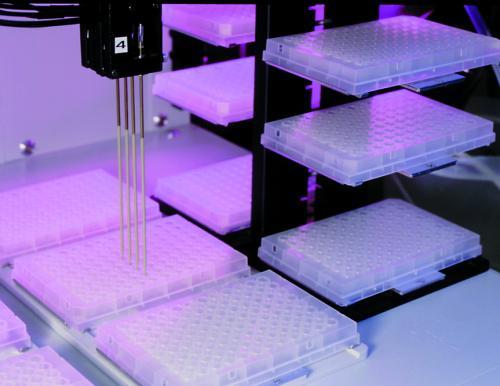
Strathclyde microplates for high-throughput screening
4 notes
·
View notes
Text
polynature #2
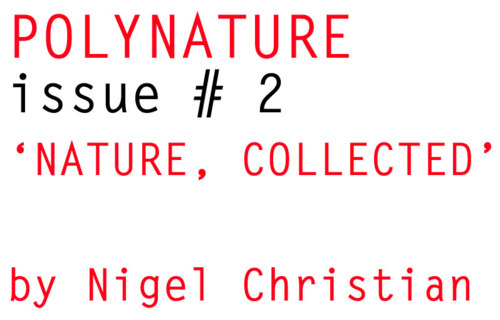
The first Polynature introduced a stark distinction between the meaning of the term “nature” as found in contemporary dictionaries and everyday usage - nature as “all that is untouched by humanity” or external to human society - and the relationships that really exist between humanity and the rest of the “natural” world today - that is, relationships of intense exploitation, manipulation, enclosure, and internalization so long-standing and seemingly irreversible that identifying anything on Earth beyond human influence is simply impossible.
This, the second Polynature, will look briefly at one of the primary processes through which the internalisation of “nature” into human society has occured - capitalisation/commodification - through the specific prism of one of the oldest and most basic ways in which humanity interacts with “nature”; the collection of plants (what follows is an extremely condensed version of several chapters of my ph.d thesis (Christian; 2007).
Today, the collection of plant material is subject to international law. When plant collecting is legal it is known as “bioprospecting”, when it’s illegal it’s known as “biopiracy”. These terms came into usage in the early 1990s, amid the debates that resulted in the signing of the 1992 Convention on Biological Diversity (CBD). The original collection of samples of thousands of garden plants and the economically, environmentally, geo-politically and biopolitically significant collection of plantation crops such as cotton, cinchona, tea and rubber by Europeans in the colonial era would all be classed as illegal biopiracy by the CBD if they occured today. In response to a 1980s resurgence of interest within the wealthy nations’ bioscientific corporations in collecting potentially valuable plants in the Amazon the signatories of the CBD were motivated by the wish to prevent any repeat of these major acts of biopiracy.
The aim was admirable (and, it should be noted, the solution was effective), but the CBD had the result of marking all biological material as property at the national level. The logic behind the CBD went something like this: in order for the governments of the poorer nations to classify plant (and animal) collections made without permission and without provision for financial compensation as “theft” there needs to be something to steal; because (at least, in a capitalist society) one can only “steal” something that is owned by another legal entity (individual, organisation or nation) plants (also now known as “bioresources”) need to be legally defined as “property”.
The text of the CBD did not state it outright but this meant that the entirety of “nature” was no longer categorized as the “common heritage of humankind” - as European defenders of colonial-era biopiracy used to argue it should be - but became legally recognised as the property of nation-states. Not every nation signed the CBD but a significant majority did. The CBD remains to this day the definitive document in disputes regarding the justice or otherwise of the movement of plant material from one nation to another.
In this case, as in all others, the writing of law marks the end-point of a process of social change, not the beginning; the CBD simply recognised in international law that the process of the capitalization of all the non-human resources on Earth is complete.
It is no coincidence that the CBD’s signatories’ marking of all plant life as national property - the completion of the long process capitalisation of “nature” - was directly and explicitly an effort to restrict unjst profiteering from the international movement of botanical specimens. The relationship between botanical research and commerce is long and close. It’s impossible to locate a point in space and time when the process began but it’s certain that the systematic collection, identification, study and trade in plant materials began in at least the 17th century among European apothaceries seeking medicinal plants (Allen, 1994: Thomas, 1983).
In the 18th century the motivation for plant-collecting went beyond these local and professional limits and was seen as a matter of potentially national importance. The wealthy British landowner Sir Joseph Banks (famous for funding and travelling with the 1768-1771 Cook voyage to Australia and back) was as aggressive in his funding of plant-collecting missions to the end of the earth as he was in his conviction that the British could turn itself into a world power by means of locating the already internationally-valuable plants such as cotton, tea and mulberry, and founding large-scale colonial plantations (Brockway, 1979: Drayton, 2000: Gascoigne, 1998, Mackay, 1985). Karl Linnaeus (famous of course for establishing the botanical classification system we use to this day) sought the same plants with a misguided, but then-plausible view to establishing plantations of them in Sweden (Koerner, 1999).
In an earlier case of an act of law signalling significant changes in the human relation to the “natural” world, in the 19th century, specifically in 1815, the British Apothaceries Act made it a requirement that all practising medicine-men demonstrate their ability to locate and identify the plants that were the tools of their trade. This effectively institutionalized plant-collecting and had the unintended but historically crucial consequence of igniting a furious market in surplus plant samples. By 1845 botanists and botanical collectors were complaining that “every inch of ground has been trodden and re-trodden by experienced botanists” (quoted in Short, 1994) and that to procure samples of “new” plants they needed either to travel beyond Europe or purchase samples from collectors who had done so. To paraphrase Raby (1996; 75) Europe “had been collected”. The market in European specimens very soon merged with the market in samples from the early European colonies to create an international market that was supported by overlapping networks of academic, horticultural, medicinal and purely commercial institutions well before the turn of the 20th century.
It was during the 20th century that the Banksian/Linnaean dream of colonial governments profiting economically and geo-politically from systematic plant-collections became a reality. Large-scale plantations of cash-crops such as tea, cinchona and rubber were founded from samples identified by plant collectors employed by establishments such as Kew Gardens. Though these created entire new landscapes and ways of life in the colonies (students of Foucault would be justified in talking of these social changes in terms of biopower) the initial collections themselves had no lasting impact on the environemnts the collectors operated in; for example, although no-one could mistake a rubber plantation for a “natural” environment it is plausible that a modern visitor to (or photographer of) the parts of the Amazon from which the plants that were moved to British plantations in South-East Asia were sourced would detect no trace of this infamous act of biopiracy, if, that is, they have somehow avoided subsequent deforestation in the 21st century.
In relation to the stated aim of Polynature - to introduce a variety of the many ways in which we can and do interact with the non-human environment and offer suggestion as to how and why we are able to retain such an innacurate definition of “nature” - Polynature #2 makes the following suggestion:
One of the fundamental ways in which the everyday definition of “nature” as “that which is untouched by humanity” has become untenable is through the making-available of all plant life to capital (or, students more familiar with Deleuze than Marx may prefer to use the concept “deterritorialization” here). Similarly, one of the primary ways in which all plant life on earth has become available to capital is through the collecting of all plant life into libraries of samples, “herbaria”. The suggestion has two related aspects: 1) the long history of the process of the capitalisation of nature is effectively complete and as such, is largely invisible to the contemporary eye 2) the collection of (samples of) plant life has in itself not had long-term impact on environments.
This means that it’s entirely possible to stand in (or view a photograph of what appears to be) a pristine landscape and not be able to see that all the plants found there are in international law owned by the government whose territory one is standing in and that the majority of the plant life there is “known to science” through the combined historical efforts of very many plant collectors. This invisibility of the parallel historical processes of commodification and collection of plant life contributes to our continuing ability to imagine that (some) landscapes (though of course excluding all the urban and agriculatural land) can still be described accurately with the adjective “natural”. In turn we are therefore able to succeed in persisting with a dictionary and everyday definition of the term “nature” as meaning “all that is untouched by humanity”, even though we do not need to delve very deeply into the social history of the botanical sciences before we begin to question that definitions’ accuracy and to wonder which powers would prefer us not to ask the question too vehemently.
References
The Convention on Biological Diversity.
Allen, D. E. 1994. The Naturalist in Britain: A Social History [2nd edition]. Princeton University Press. Princeton.
Brockway, L. H. 1979. Science and Colonial Expansion: The Role of the British Botanic Gardens. Academic Press. New York.
Christian, N. D. 2007. From Biopiracy to Bioprospecting: An Historical Sociology of the Search for Biological Resources. Doctorate thesis. University of Warwick.
Drayton, R. H. 2000. Nature’s Government: Science, Imperial Britain, and the `Improvement’ of the World. Yale University Press. London.
Gascoigne, J. 1998. Science in the Service of Empire: Joseph Banks, the British State and the Uses of Science in the Age of Revolution. Cambridge University Press. Cambridge.
Mackay, D. 1985. In the Wake of Cook: Exploration, Science and Empire, 1780-1801. St. Martin’s Press. New York.
Raby, P. 1996. Bright Paradise: Victorian Scientific Travellers. Pimlico Press. London.
Short, P. 2004. The Pursuit of Plants. Timber Press. Portland.
Thomas, K. 1983. Man and the Natural World: Changing Attitudes in England 1500-1800. Allen Lane. London.
5 notes
·
View notes
